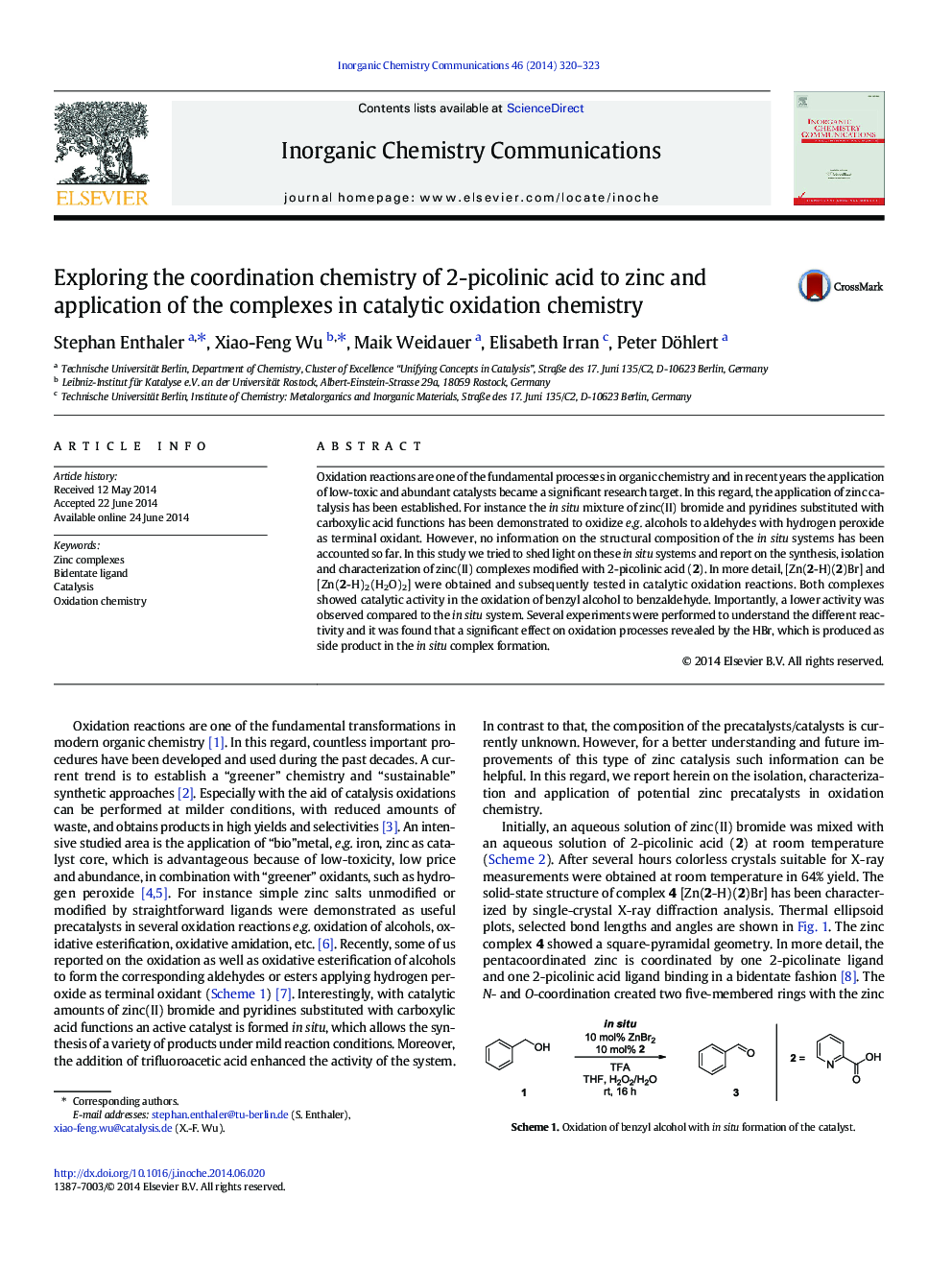| Article ID | Journal | Published Year | Pages | File Type |
|---|---|---|---|---|
| 1303619 | Inorganic Chemistry Communications | 2014 | 4 Pages |
•The coordination chemistry of 2-picolinic acid 2 towards zinc was studied•2 forms with ZnBr2 the complex [Zn(2-H)(2)Br] with a square-pyramidal geometry•[Zn(2-H)(2)Br] can be converted to [Zn(2-H)2(H2O)2] with an octahedral geometry•Application in zinc-catalyzed oxidation of benzyl alcohol
Oxidation reactions are one of the fundamental processes in organic chemistry and in recent years the application of low-toxic and abundant catalysts became a significant research target. In this regard, the application of zinc catalysis has been established. For instance the in situ mixture of zinc(II) bromide and pyridines substituted with carboxylic acid functions has been demonstrated to oxidize e.g. alcohols to aldehydes with hydrogen peroxide as terminal oxidant. However, no information on the structural composition of the in situ systems has been accounted so far. In this study we tried to shed light on these in situ systems and report on the synthesis, isolation and characterization of zinc(II) complexes modified with 2-picolinic acid (2). In more detail, [Zn(2-H)(2)Br] and [Zn(2-H)2(H2O)2] were obtained and subsequently tested in catalytic oxidation reactions. Both complexes showed catalytic activity in the oxidation of benzyl alcohol to benzaldehyde. Importantly, a lower activity was observed compared to the in situ system. Several experiments were performed to understand the different reactivity and it was found that a significant effect on oxidation processes revealed by the HBr, which is produced as side product in the in situ complex formation.
Graphical abstractZinc complexes modified with 2-picolinic acid have been synthesized, characterized and applied in oxidation catalysis.Figure optionsDownload full-size imageDownload as PowerPoint slide
